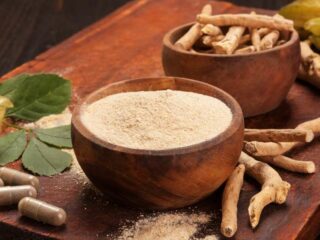Below are the general guidelines for dosing Doxepin (doxepin hydrochloride). Note that these dosages may be adjusted on a case-by-case basis for individual patients. Always follow your prescribing physician’s instructions for taking Doxepin.
The following information comes from DailyMed, an FDA label information provider.
What if I miss a dose of Doxepin?
According to Mayo Clinic, if you miss a dose of doxepin, take it immediately unless you are closer to the time of your next dose. Never double dose.
What if I overdose on Doxepin?
Deaths may occur from overdosage with this class of drugs. Multiple drug ingestion (including alcohol) is common in deliberate tricyclic antidepressant overdose. As the management is complex and changing, it is recommended that the physician contact a poison control center for current information on treatment. Signs and symptoms of toxicity develop rapidly after tricyclic antidepressant overdose; therefore, hospital monitoring is required as soon as possible.
Manifestations
Critical manifestations of overdose include: cardiac dysrhythmias, severe hypotension, convulsions and CNS depression, including coma. Changes in the electrocardiogram, particularly in QRS axis or width, are clinically significant indicators of tricyclic antidepressant toxicity.
Other signs of overdose may include: confusion, disturbed concentration, transient visual hallucinations, dilated pupils, agitation, hyperactive reflexes, stupor, drowsiness, muscle rigidity, vomiting, hypothermia, hyperpyrexia, or any of the symptoms listed under ADVERSE REACTIONS.
Deaths have been reported involving overdoses of doxepin.
General Recommendations
General
Obtain an ECG and immediately initiate cardiac monitoring. Protect the patient’s airway and establish an intravenous line. A minimum of 6 hours of observation with cardiac monitoring and observation for signs of CNS or respiratory depression, hypotension, cardiac dysrhythmias and/or conduction blocks, and seizures is strongly advised. If signs of toxicity occur at any time during this period, extended monitoring is recommended. There are case reports of patients succumbing to fatal dysrhythmias late after overdose; these patients had clinical evidence of significant poisoning prior to death and most received inadequate gastrointestinal decontamination. Monitoring of plasma drug levels should not guide management of the patient.
Cardiovascular
A maximal limb lead QRS duration of ⥠0.10 seconds may be the best indication of the severity of the overdose. Intravenous sodium bicarbonate should be used to maintain the serum pH in the range of 7.45 to 7.55. If the pH response is inadequate, hyperventilation may also be used. Concomitant use of hyperventilation and sodium bicarbonate should be done with extreme caution, with frequent pH monitoring. A pH > 7.60 or a pCO 2 < 20 mm Hg is undesirable. Dysrhythmias unresponsive to sodium bicarbonate therapy/hyperventilation may respond to lidocaine, bretylium or phenytoin. Type 1A and 1C antiarrhythmics are generally contraindicated (e.g., quinidine, disopyramide and procainamide).
In rare instances, hemoperfusion may be beneficial in acute refractory cardiovascular instability in patients with acute toxicity. However, hemodialysis, peritoneal dialysis, exchange transfusions and forced diuresis generally have been reported as ineffective in tricyclic antidepressant poisoning.
CNS
In patients with CNS depression, early intubation is advised because of the potential for abrupt deterioration. Seizures should be controlled with benzodiazepines, or if these are ineffective, other anticonvulsants (e.g., phenobarbital, levetiracetam). Physostigmine is not recommended except to treat life threatening symptoms that have been unresponsive to other therapies, and then only in consultation with a poison control center.
Psychiatric Follow-up
Since overdosage is often deliberate, patients may attempt suicide by other means during the recovery phase. Psychiatric referral may be appropriate.
Pediatric Management
The principles of management of child and adult overdosages are similar. It is strongly recommended that the physician contact the local poison control center for specific pediatric treatment.
Dosage and Administration
For most patients with illness of mild to moderate severity, a starting daily dose of 75 mg is recommended. Dosage may subsequently be increased or decreased at appropriate intervals and according to individual response. The usual optimum dose range is 75 mg/day to 150 mg/day.
In more severely ill patients higher doses may be required with subsequent gradual increase to 300 mg/day if necessary. Additional therapeutic effect is rarely to be obtained by exceeding a dose of 300 mg/day.
In patients with very mild symptomatology or emotional symptoms accompanying organic disease, lower doses may suffice. Some of these patients have been controlled on doses as low as 25 to 50 mg/day.
The total daily dosage of doxepin (as the hydrochloride) may be given on a divided or once a day dosage schedule. If the once a day schedule is employed, the maximum recommended dose is 150 mg/dose. This dose may be given at bedtime. The 150 mg capsule strength is intended for maintenance therapy only and is not recommended for initiation of treatment.
Antianxiety effect is apparent before the antidepressant effect. Optimal antidepressant effect may not be evident for 2 to 3 weeks.
How is Doxepin supplied?
Doxepin Hydrochloride Capsules, USP are available containing doxepin hydrochloride, USP equivalent to 10 mg, 25 mg, 50 mg or 100 mg of doxepin.
The 10 mg capsule is a hard-shell, gelatin capsule with a buff opaque cap and buff opaque body axially printed with MYLAN over 1049 in black ink on both the cap and the body. They are available as follows:
NDC 51079-436-20 – Unit dose blister packages of 100 (10 cards of 10 capsules each).
The 25 mg capsule is a hard-shell, gelatin capsule with an ivory opaque cap and white opaque body axially printed with MYLAN over 3125 in black ink on both the cap and the body. They are available as follows:
NDC 51079-437-20 – Unit dose blister packages of 100 (10 cards of 10 capsules each).
The 50 mg capsule is a hard-shell, gelatin capsule with an ivory opaque cap and ivory opaque body axially printed with MYLAN over 4250 in black ink on both the cap and the body. They are available as follows:
NDC 51079-438-20 – Unit dose blister packages of 100 (10 cards of 10 capsules each).
The 100 mg capsule is a hard-shell, gelatin capsule with a brite lite green opaque cap and white opaque body axially printed with MYLAN over 6410 in black ink on both the cap and the body. They are available as follows:
NDC 51079-651-20 – Unit dose blister packages of 100 (10 cards of 10 capsules each).
Store at 20° to 25°C (68° to 77°F). [See USP Controlled Room Temperature.]
Protect from light.
PHARMACIST: Dispense a Medication Guide with each prescription.
Disclaimer: this article does not constitute or replace medical advice. If you have an emergency or a serious medical question, please contact a medical professional or call 911 immediately. To see our full medical disclaimer, visit our Terms of Use page.





